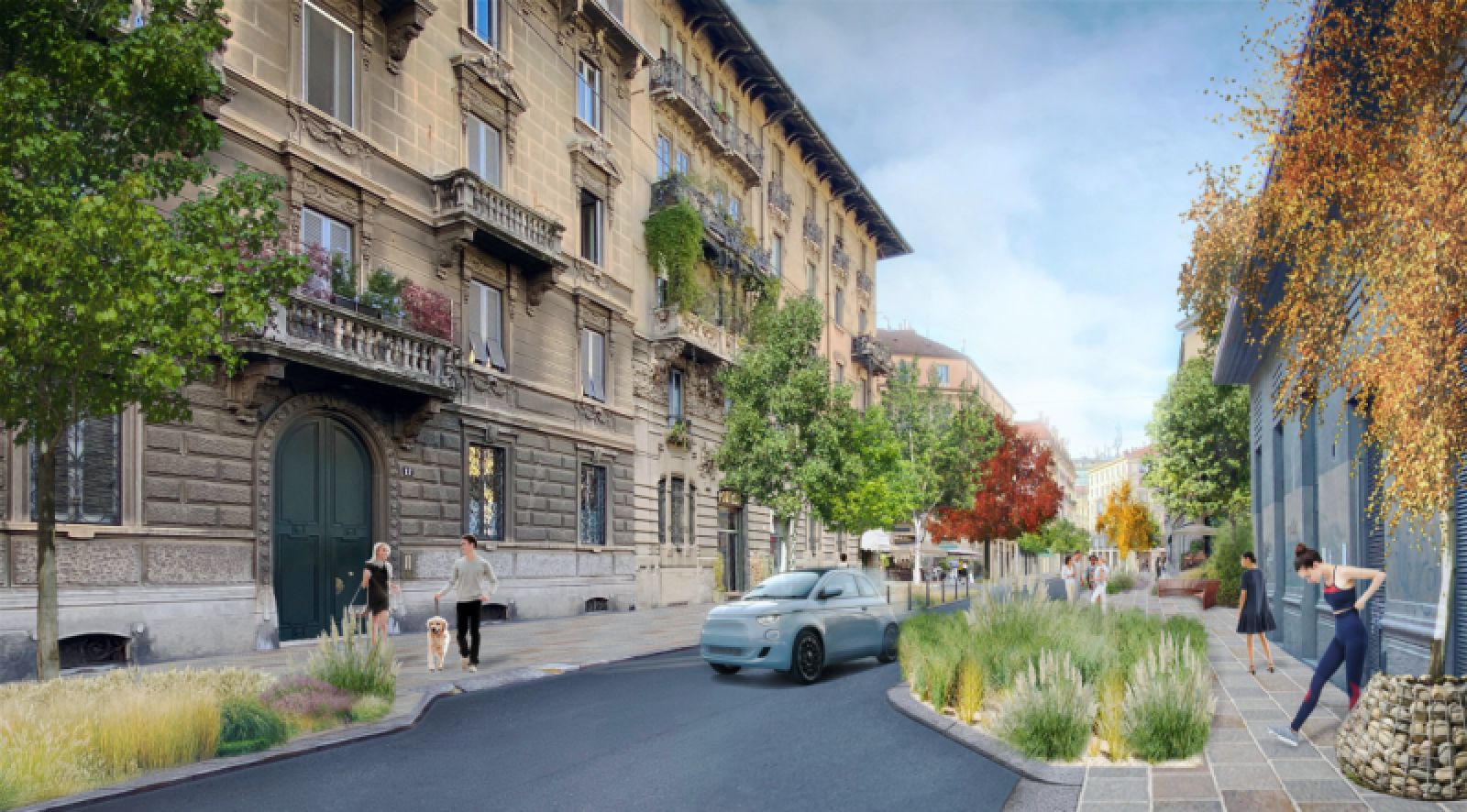The Covid-19 pandemic will also impact the urban system, imposing temporary measures to manage social distancing but above all prompting reflections on how to trigger processes of economic and social renaissance. The key to development will be the neighbourhoods, with interventions that make them increasingly livable, people-friendly, safe, accessible and economically dynamic.
This is the context that spawned Valet: a city development strategy that puts roads at the centre. Valet is a parklet system that generates new open-air spaces for shops and terraces for restaurants, transforming roads into livable spaces that are green and friendly. The key is the prefabricated system of modular plates developed in partnership with Italcementi.
Italcementi’s high-tech lightweight concrete elements
The research and innovation centre of Italcementi has developed high-tech lightweight concrete elements oriented toward sustainability, specific for urban paving: draining, with recycled materials, photocatalytic to reduce pollutants, aesthetic to combine beauty, safety and practicality, clear-coloured to combat high temperatures and reduce, especially in summer, the “heat island” effect that overheats urban centres.
Elements built in concrete transform the carriageway or rest areas into pavements that are on a level with the pedestrian area. A system designed to reduce construction times and costs: lightweight but very strong, modular and readily industrialised, it can be adapted to suit any solution and can be installed on any road easily without any preparatory work. The plates have been designed as motherboards on which to set the greenery and other elements that transform the street setting: shrubs and trees, awnings and sun-shades, furniture and lighting.
The aim is to achieve a complex, open streetscape where the elements dialogue with one another and the passers-by, on foot, by bike or by car, feel they are in a world asking to be explored. Valet uses only part of the parking spaces, reducing the section of the carriageway in order to help lower the speed of cars and transforming the road into a “compatible mixed traffic zone”. Redeveloping the road means acting on people’s quality of life, the profitability of commercial activities and the aesthetic impact of the urban landscape.
Case study: Melzo Street in Milan
The first venue for an urban application of Valet is Melzo Street. Located in the Porta Venezia district, downtown Milan, this is an ideal example of the transformative power of its applied design. Vudafieri-Saverino Partners, PRR Architetti and Lorenzo Noè have worked with citizens, dealers and local authorities to define a tangible redevelopment proposal and face the challenge of an economic and social recovery.
The intervention postulates the conversion of the entire road into an area with a 30 kph speed limit. The carriageway – which retains the one-way direction – is narrowed down by subtracting surface area from parked cars. This strategy allows the pavement to be widened on both sides, through the use of parklets. The track thus loses its straight line nature in favour of a route dotted with inlets, recesses and widenings.
These are useful not only as areas for placing bars and restaurants’ dehors, but also to reduce driving speed. Simplified in this way, the carriageway is shared between cars and bicycles, leaving to pedestrians the broad pavements: areas equipped with street furniture and greenery that make it an ideal place to stop and socialise. Source by Vadafieri – Saverino Partners and images Courtesy of Nemo Monti.
